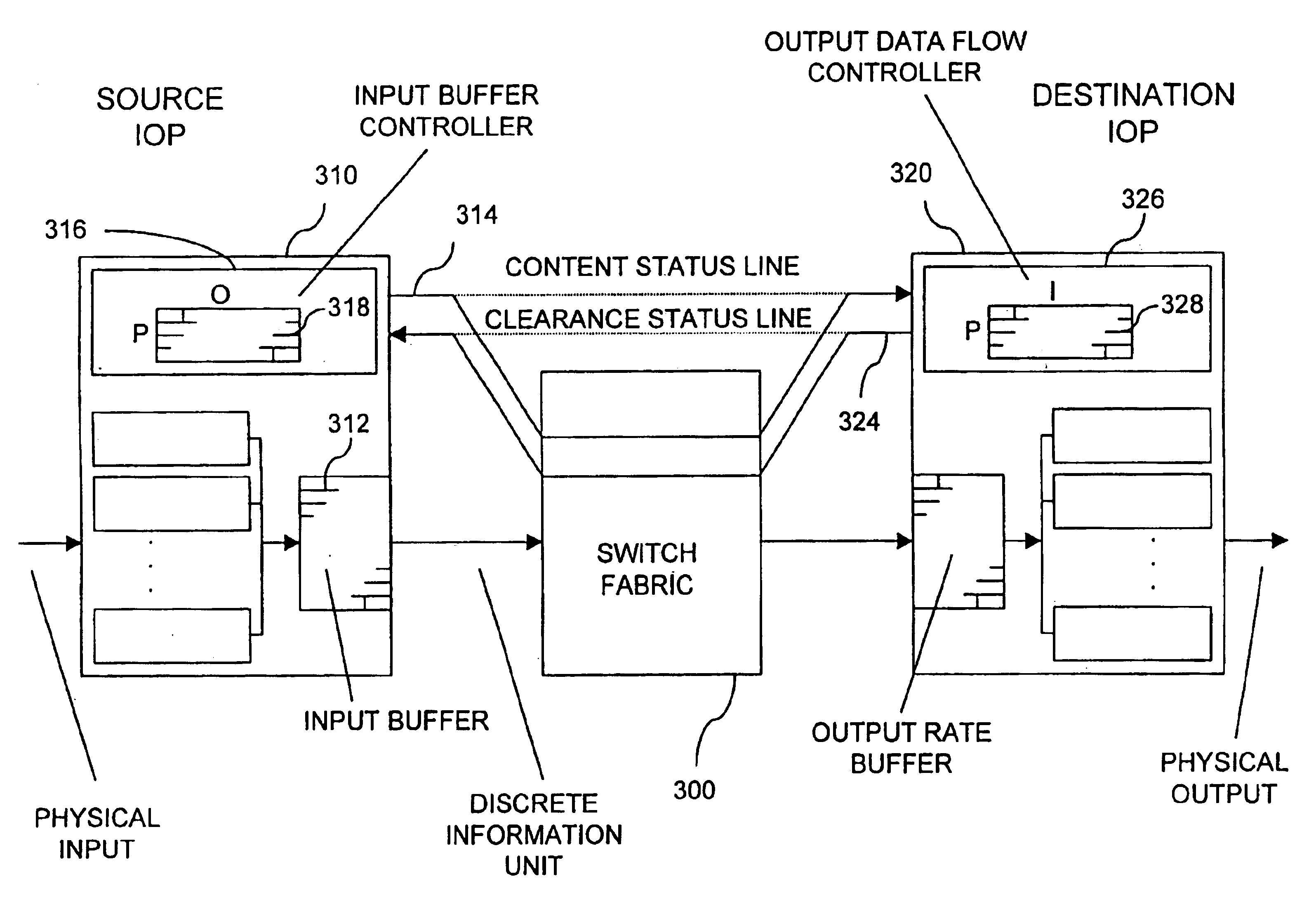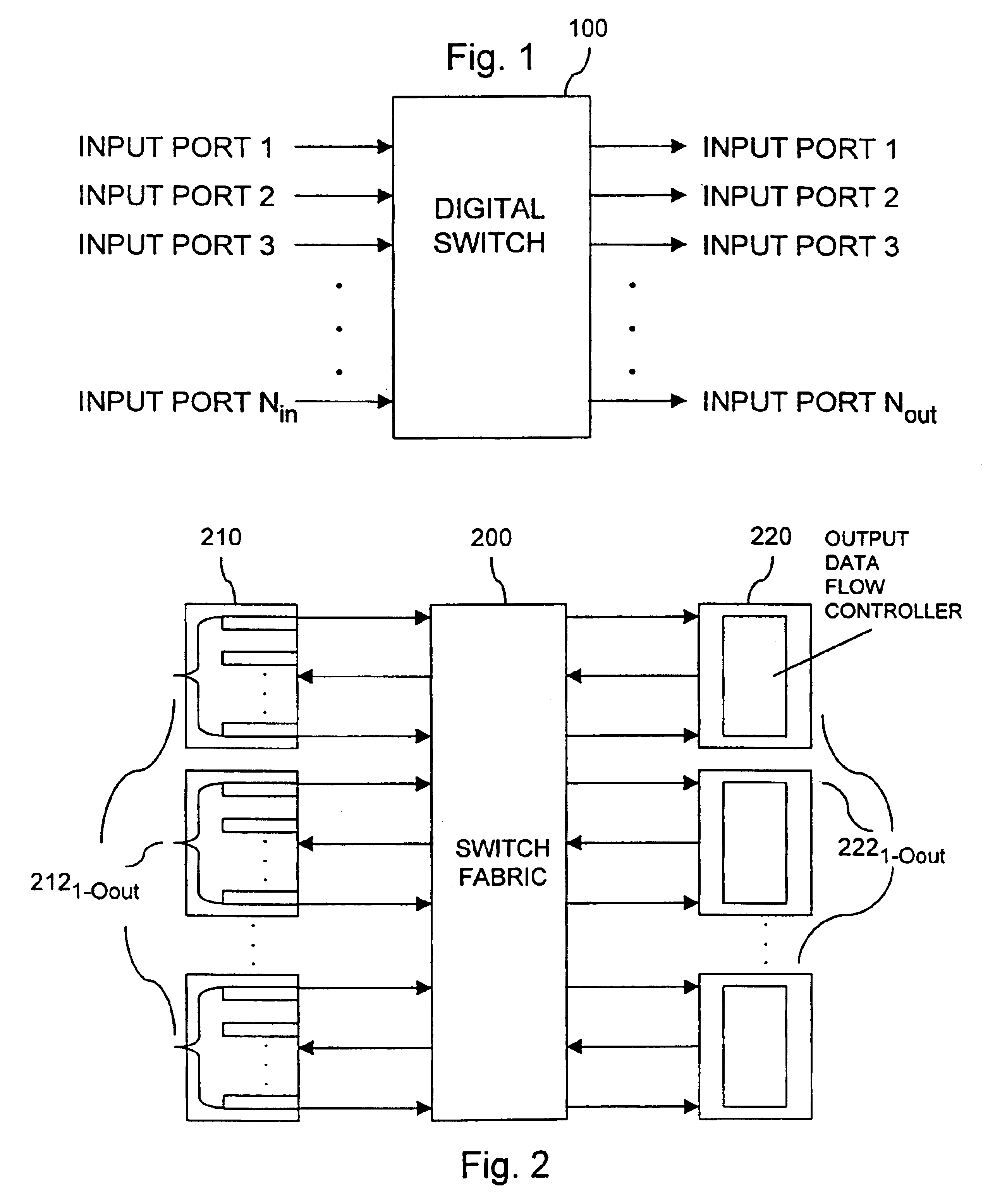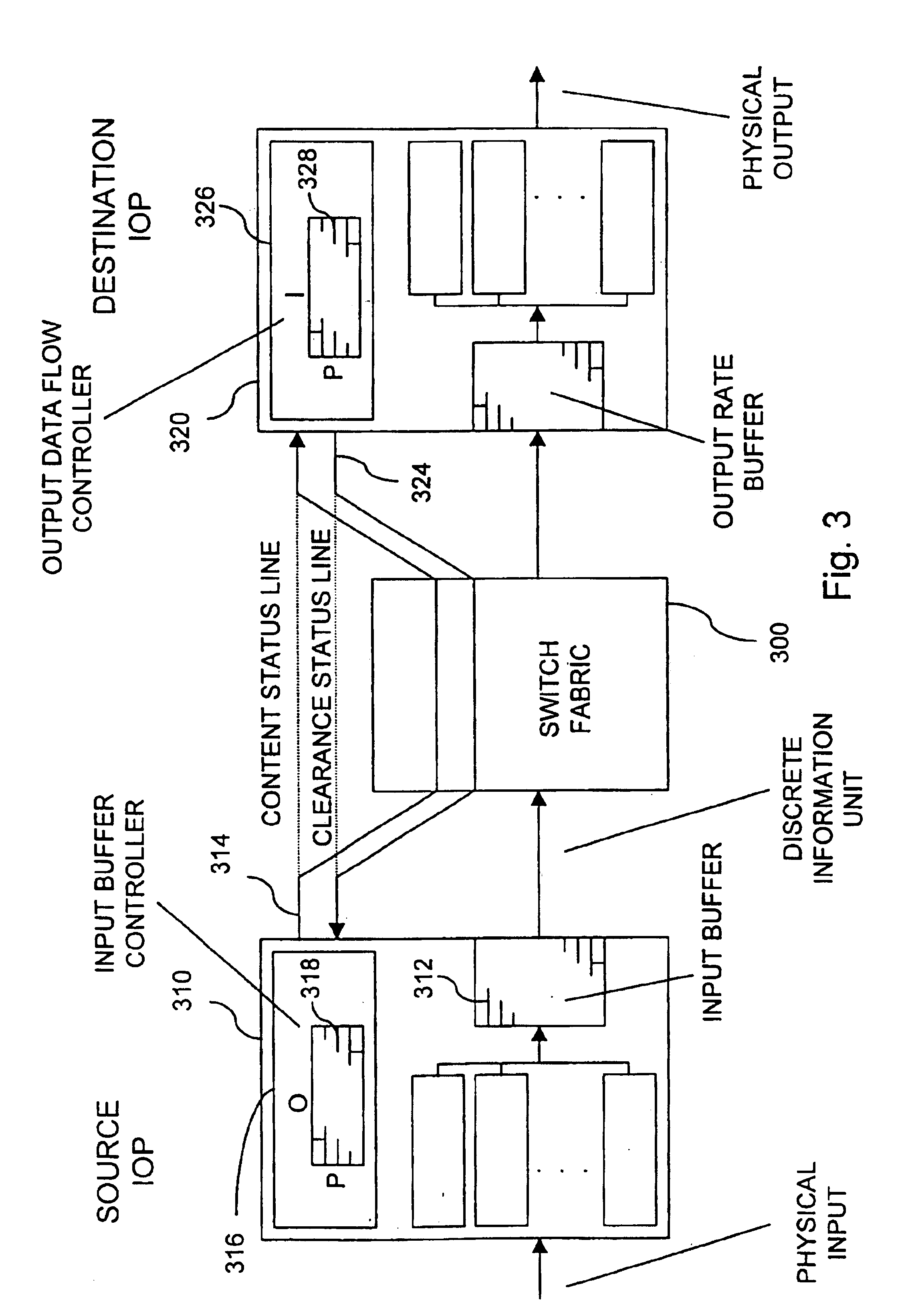Input buffering and queue status-based output control for a digital traffic switch
- Summary
- Abstract
- Description
- Claims
- Application Information
AI Technical Summary
Benefits of technology
Problems solved by technology
Method used
Image
Examples
Embodiment Construction
[0024]Referring to FIG. 2, the general architecture of a digital traffic switch incorporating the present invention is shown. Multiple inputs and multiple outputs are coupled via a switch fabric 200 such that every input port (and its associated input buffer control unit) may communicate with every output port (and its associated output data flow control unit), and every output port (and its associated output data flow control unit) may communicate with every input port (and its associated input buffer control unit). At any given instant in time, a subset (or all) of the source input-output processors (IOP) 210 receive digital traffic destined for a subset (or all) of the destination IOP 220. Digital traffic may therefore be imagined as flowing from left to right, from source IOP 210 to destination IOP 220. Each source IOP may have one or more associated input ports and each destination IOP may have one or more associated output ports.
[0025]Within each source IOP 210, there is an in...
PUM
 Login to View More
Login to View More Abstract
Description
Claims
Application Information
 Login to View More
Login to View More - R&D
- Intellectual Property
- Life Sciences
- Materials
- Tech Scout
- Unparalleled Data Quality
- Higher Quality Content
- 60% Fewer Hallucinations
Browse by: Latest US Patents, China's latest patents, Technical Efficacy Thesaurus, Application Domain, Technology Topic, Popular Technical Reports.
© 2025 PatSnap. All rights reserved.Legal|Privacy policy|Modern Slavery Act Transparency Statement|Sitemap|About US| Contact US: help@patsnap.com



